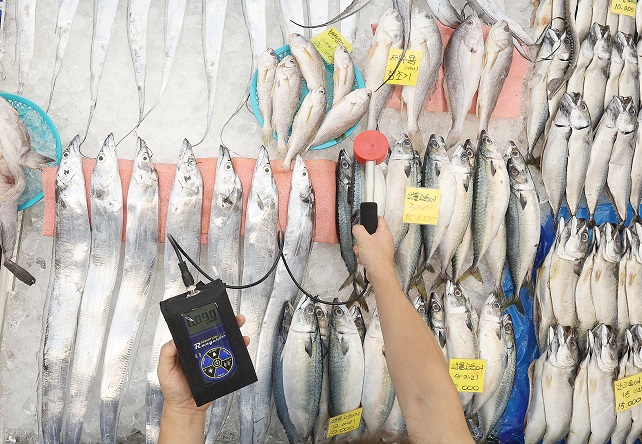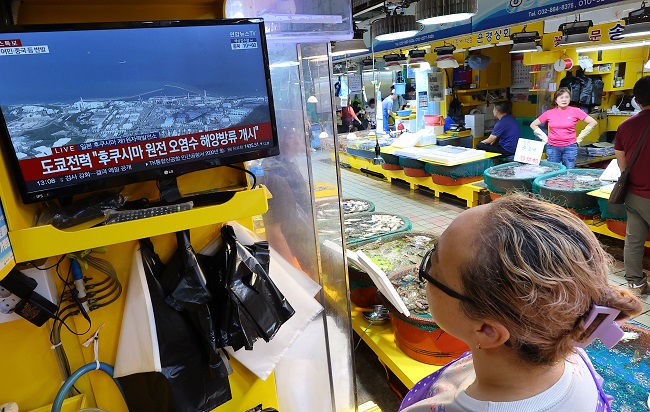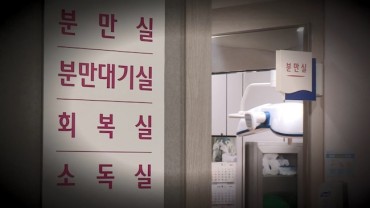
An official checks radiation levels of fish to be sold at a fish market in the southeastern city of Daegu on Aug. 28, 2023. (Yonhap)
SEOUL, Aug. 28 (Korea Bizwire) — South Korea on Monday launched a special inspection into the marking of country of origin for imported seafood products to dispel public safety concerns following Japan’s release of contaminated water from its crippled nuclear power plant, the oceans ministry said.
On Thursday, Japan began releasing “treated” radioactive water from the Fukushima nuclear power plant into the ocean amid concerns and opposition raised by its fishing population and neighboring countries.
The 100-day intensive inspection is meant to check if importers, distributors and retailers properly mark the origin of major seafood items coming from overseas, such as scallops, sea bream and sea squirts, Vice Oceans Minister Park Sung-hoon said during a regular briefing on the Fukushima issue.
“The government has been monitoring the country of origin marking all year round. But we will carry out a special probe on an unprecedented level as concerns are growing over the distribution system of Japanese and other imported seafood,” Park said.
South Korea banned all seafood imports from eight Japanese prefectures near Fukushima in 2013 on concerns over their radiation levels in the wake of the meltdown incident in 2011.
South Korea has said it will not lift the import curbs as the people’s safety and health can never be compromised.

A shopkeeper watches a TV report at a fishery market in Incheon, west of Seoul, on Aug. 24, 2023, that Japan started discharging contaminated water from the crippled Fukushima Daiichi nuclear power plant into the sea the same day. (Yonhap)
It is the second intensive inspection into imported seafood following the first round that took place in May and June, and the government will mobilize all personnel available by joining hands with related private institutions, civic activists and experts.
Some 20,000 stores and distribution centers will come under the probe, and the government will triple the number of visits by an inspection team to a single store, according to the ministry.
Those who fail to mark the country of origin can face fines of up to 10 million won (US$7,600), and those who forge the mark can face up to seven years in prison or fines of up to 100 million won.
“The 100-day inspection will be conducted in an unprecedented manner so that the people can buy and eat safe seafood without concerns,” Park said.
During the first half of this year, South Korea imported 10,710 tons of seafood from Japan, accounting for 2 percent of the country’s total seafood imports.
In May and June, the government inspected domestic distribution channels of Japanese seafood and caught 158 retailers for improper or no origin marks.
Park said that the in-house cafeteria of the presidential office started serving local seafood Monday for a week, in a gesture to demonstrate the safety of seafood consumption.
Meanwhile, the government said the radiation levels in the waters near South Korea remain well below the standards for drinkable water defined by the World Health Organization (WHO).
It was the first such test conducted on 15 locations in three areas of South Korea’s territorial waters after Japan’s water discharge.
The concentration of tritium in seawater following the Fukushima water release was also well below the standard limit, as the Tokyo Electric Power Co. has been monitoring the concentration of tritium in the nearby seawater to assess the potential impact of the discharge on the ocean, the Seoul government added.
(Yonhap)






